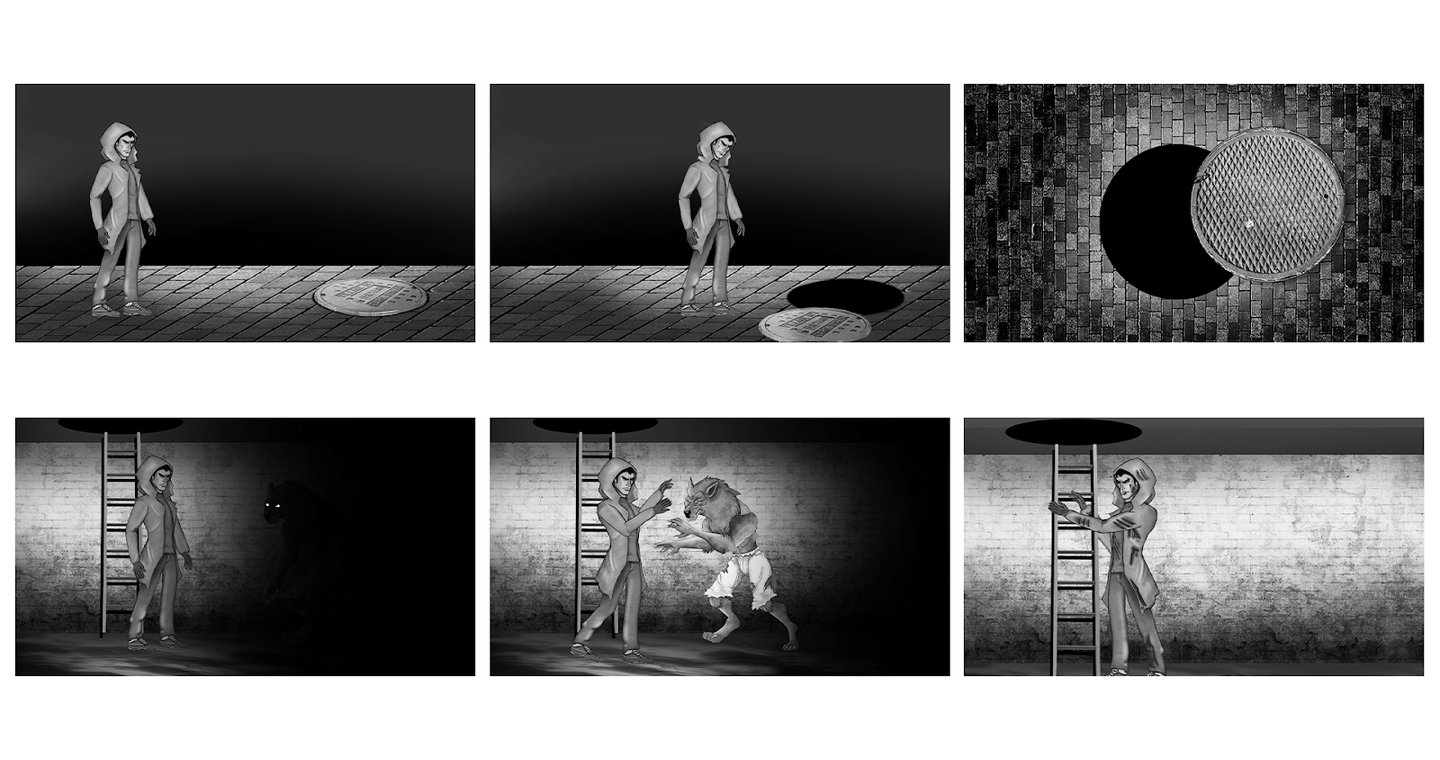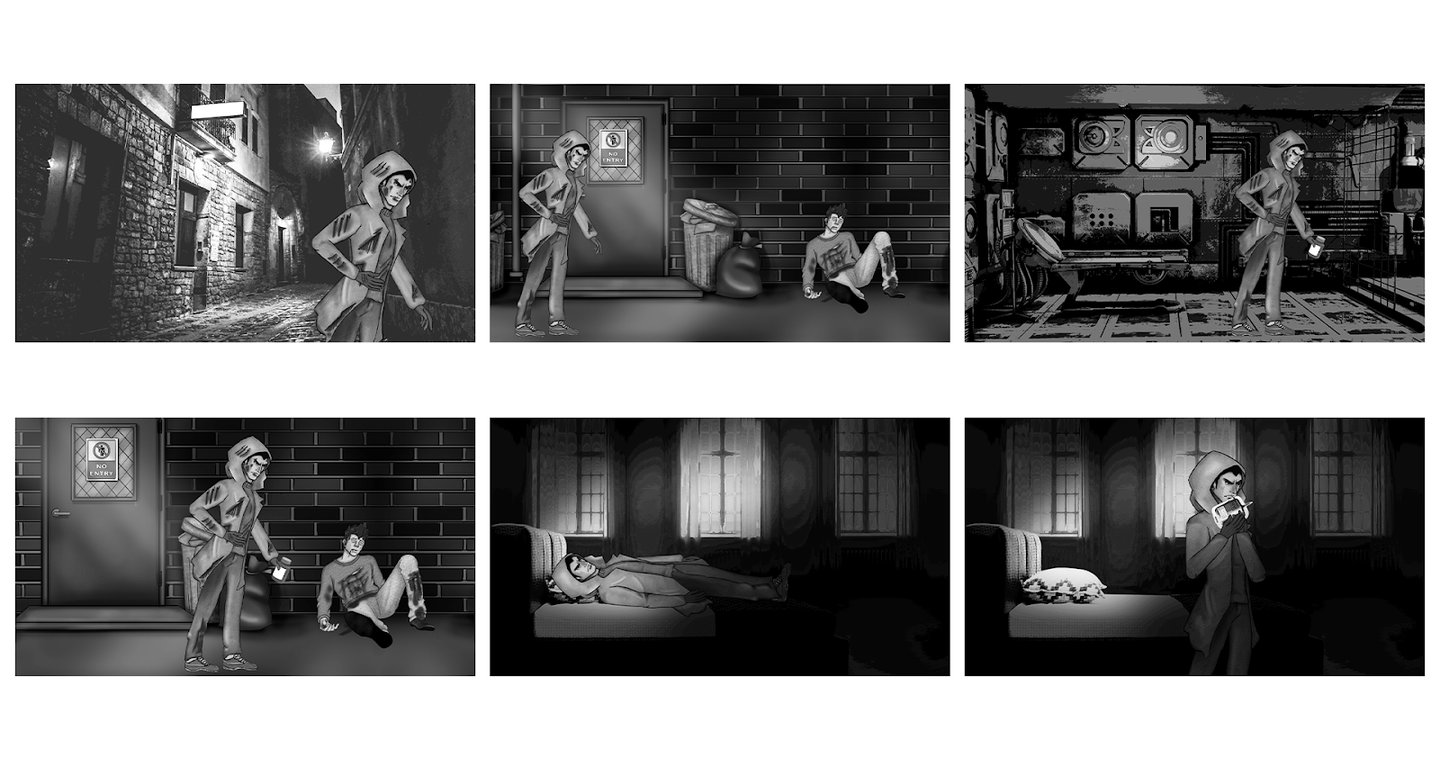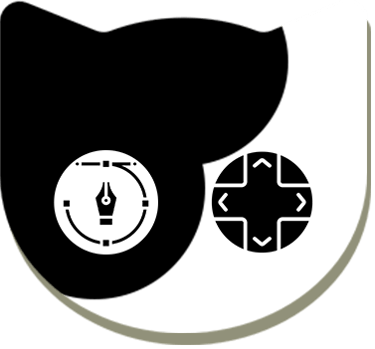Resimpulse: Storyboarding and Concept Art


The narrative now required storyboarding . While my team mate designed the characters based on the above narrative. One of the key components in the creation of this game was the storyboarding and concept art. It offered our teammate Sidhvi, the programmer, a basic notion of how the scenes in the game will play out, including an example of what a particular scenario will look like. At the same time, it indeed made it easier to pitch it to our mentors so they get an idea on what our game is about.
Professor Hope, our mentor, reviewed our first concept and offered helpful feedback on the need for a more definite gameplay element in our story. She additionally mentioned before starting with the prototype, it’s best to pitch with a storyboard included so the game narrative will be easily understood.
She gave us some great advice, so we tweaked our story and got to work on the gaming mechanics. We presented our polished game pitch to Professors Jarek Francik and Hope Caton as well as the rest of the class on January 18. The end result was a well-received pitch with a gripping plot, interesting characters, and strong gameplay components. We were eager to develop our concepts into a working prototype with only one week left.
As a team, we were able to visualise the game concepts with the aid of this storyboard, which also gave us a broad notion of how Zoha and I, the game’s creative artists, would continue to create and design the characters and animate them.
I kept in mind the simple 2-D style visuals used in the game Pentiment, which is used throughout the storyboard. I created the compositions using characters designed by my teammate Zoha, while I conceptualised the background, setting, lighting, camera angles, and so on in each frame. I made certain to capture the essence of both the mediaeval mood and the incorporation of modern aesthetics in it, which is set in the town of Kingston, United Kingdom.
I created the storyboard on Adobe Photoshop and used a combination of mixed media, matte painting and photo manipulation wherever required. Layouting was done in Adobe Illustrator.




Animation:








Dracula Walk Cycle
Wolf Hunting walk cycle
Injured Drac walk cycle
Security walk cycle
It was time to refine the appearance and create the prototype once the character styles, environment styles, and story board were decided.
Zoha gave me the characters so I could bring them to life in the game while our team’s programmer began the prototyping process. As soon as I accepted the responsibility, it was initially challenging to understand how to animate the figures because walk cycles were required. These weren’t your typical walkcycles; they had to reflect the personalities of the characters and the gaming scene’s requirements. Animation in the characters of course brings in the movement and adds life to the game. I sort through several references, especially on YouTube to animate the walk cycle.At fist I tried with Adobe After Effects and it wasn’t the best to animate, Adobe Animate was a bit complex to navigate but in the end, it was Unity who brought me success. In Unity, I animated the Characters’ movement with IK rigging. Most of the animation is produced by rotating the angles of joints in a skeleton to predetermined values. The position of a child joint changes according to the rotation of its parent and so the end point of a chain of joints can be determined from the angles and relative positions of the individual joints it contains. This method of posing a skeleton is known as forward kinematics
With the above, I animated the joints and overall structure of the characters by doing IK rigging with the help IK animator controller within Unity.
Finally, the story boarding and animation processes were critical in realising our game concept. We were able to create visually appealing characters and scenes that accurately reflected the mood and aesthetics of our game using Adobe Photoshop, Illustrator, and Unity. The IK rigging process in Unity allowed us to add life to the game by making the characters’ movements more fluid. Our efforts were rewarded when our mentors and classmates gave us positive feedback on the prototype. With the foundation in place, we can move forward with further development and make our final prototype,
Afterwards, I gave these files to my programmer to implement it in the prototype, for which before beginning to develop, we designed the game mechanics and gameplay for this. You can find more in-depth about it in my next blog!
